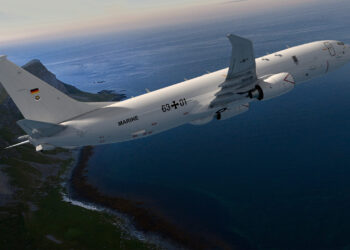US Navy,
WASHINGTON: Officials from the Navy's Program Executive Office Littoral and Mine Warfare (PEO LMW) provided an overview of the PEO's maritime unmanned vehicle systems programs Feb. 5 in Washington.
The briefing was part of the Association for Unmanned Vehicle Systems International (AUVSI) Program Review 2009. Presenters included E. Anne Sandel, Program Executive Officer, LMW; Capt. Michael Good, Littoral Combat Ship (LCS) Mission Packages program manager; Capt. Paul Siegrist, Unmanned Maritime Systems program manager; and Dr. Lora Weiss of Georgia Tech Research Institute.
“To meet future challenges in littoral and mine warfare, we must understand the operational capabilities resident in technologies such as unmanned vehicles,” said Sandel. “Furthermore we must embrace advanced technology and its promise to pace the threat in this very complex world in which we live. Our single most important job at PEO LMW is to deliver state-of-the-art warfighting capability to the men and women who defend our freedom. Developing technology into operational capability like Unmanned Maritime Vehicles is one of the ways we accomplish our mission.”
PEO LMW is developing numerous systems for operations in littoral waters for mine warfare, anti-submarine warfare, surface warfare, explosive ordnance disposal and naval special warfare applications.
“In today's environment of diverse threats capable of impacting our maritime forces and infrastructure, unmanned systems will play increasingly important roles in enhancing combat capability with reduced risk to our forces and platforms,” said Siegrist.
The Navy's new LCS Mission Modules in particular utilize a wide variety of unmanned systems for its mine warfare (MIW), surface warfare (SUW) and anti-submarine warfare (ASW) mission packages. These systems include the vertical takeoff unmanned air vehicle, unmanned surface vehicle (USV) and remote multi-mission vehicle which are used to carry a variety of sensors, communications and weapons systems to accomplish their missions. These systems are part of the mission packages being fielded for LCS. The first LCS MIW Mission Package was delivered to the Navy in September 2007. The first SUW and ASW Mission Packages were delivered to the Navy in fiscal year 2008.
“We are using unmanned systems to get the Sailor out of the minefield and extend our reach against hostile targets over the horizon and out of the range of enemy weapons systems,” said Good. “With these unmanned off-board systems, we will be able to detect and engage threats long before they get close enough to our ships to fire their weapons.”
“Unmanned vehicles (UMVs) will continue to evolve and will play an integral part in tomorrow's battlespace. It is very exciting to see how these initiatives are using commercial off the shelf solutions, small business innovation, and open architecture principles to build dependable and affordable unmanned systems,” stated Sandel. “It is evident that UMVs will be game changers in the battlespace in the next 10 – 20 years, and we in PEO LMW are committed to developing UMVs that will engage the enemy at range and ensure tactical advantages in the littoral warfighting environment.”









